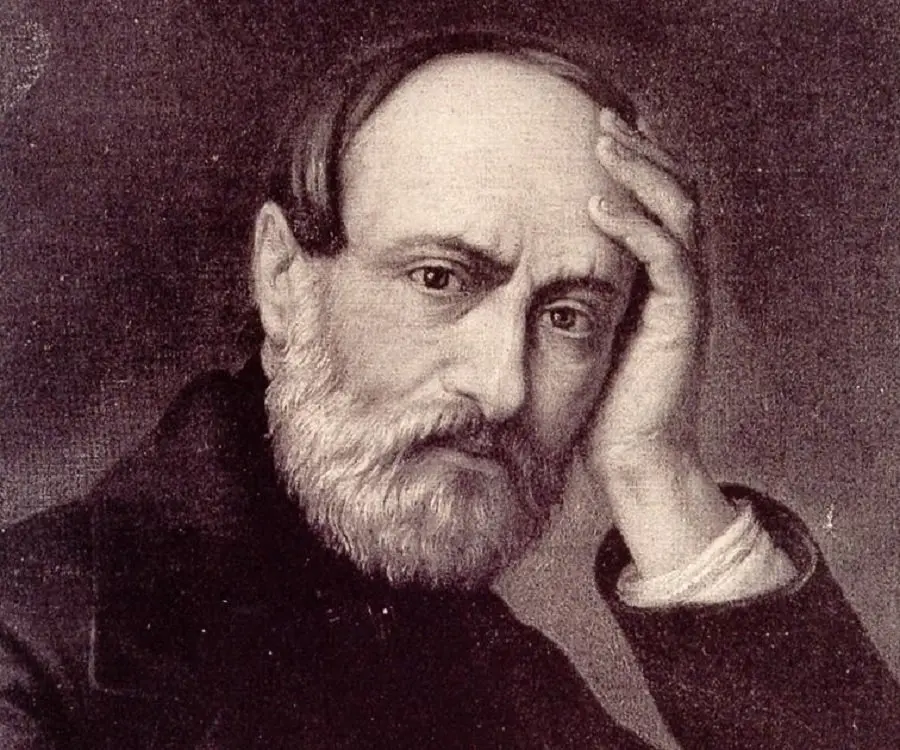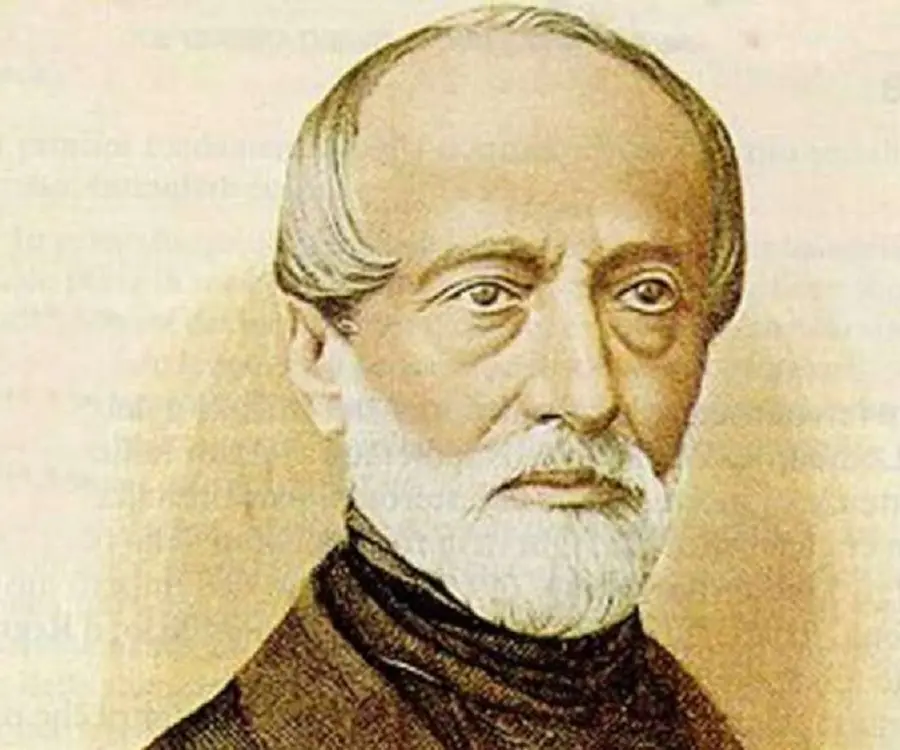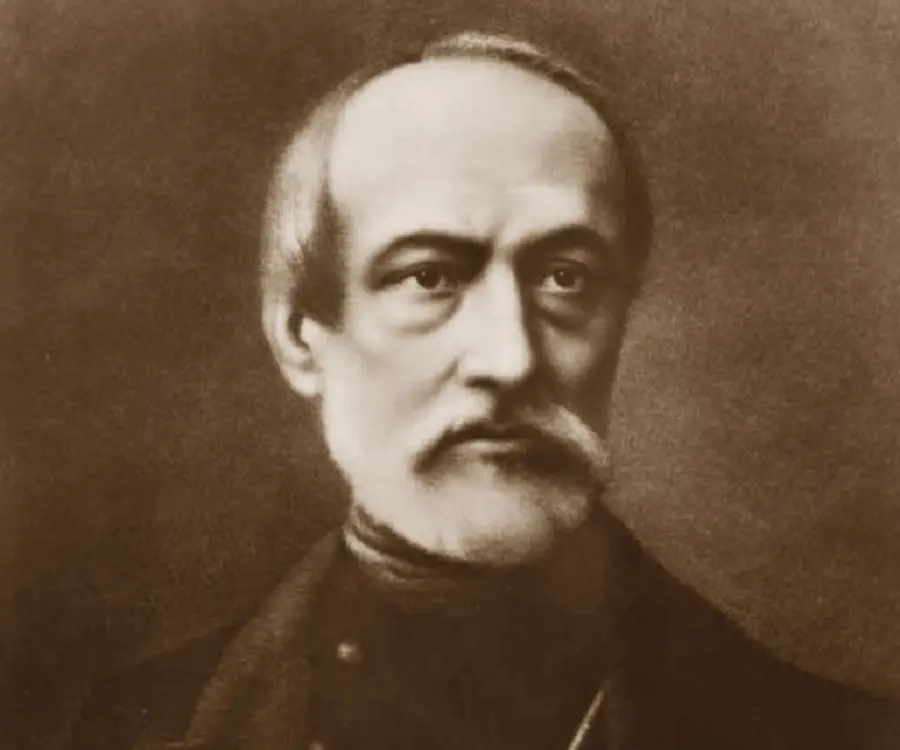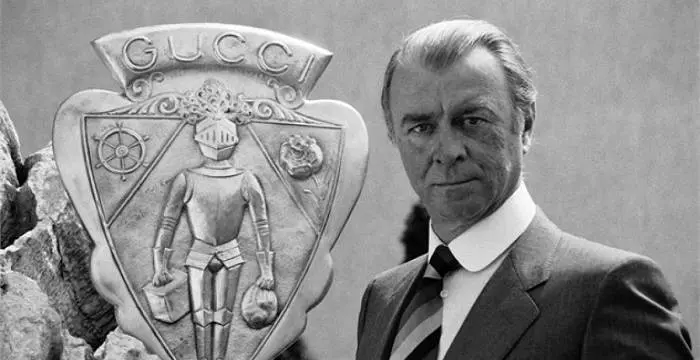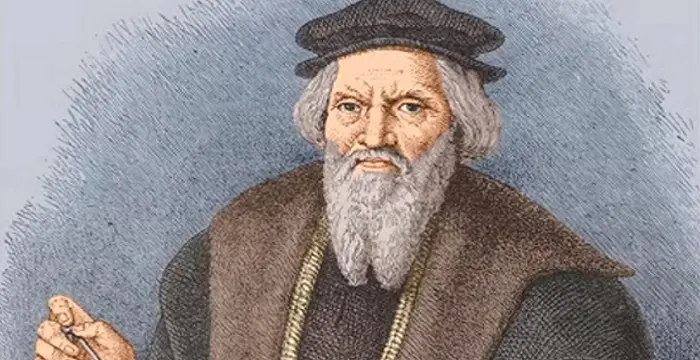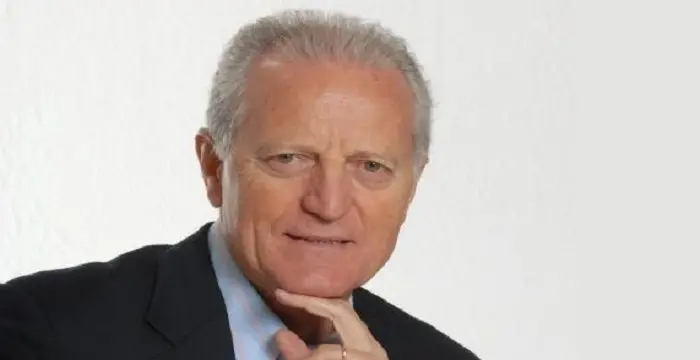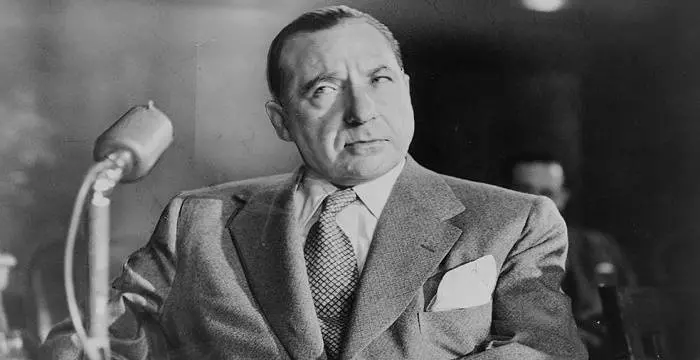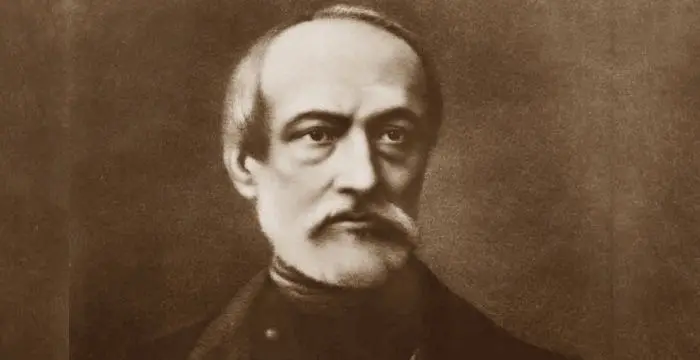
Giuseppe Mazzini - Leaders, Timeline and Life
Giuseppe Mazzini's Personal Details
Giuseppe Mazzini was one of the ‘patron saints’ of the Italian Risorgimento
| Information | Detail |
|---|---|
| Birthday | June 22, 1805 |
| Died on | March 10, 1872 |
| Nationality | Italian |
| Famous | Activists, Leaders, Political Leaders |
| Birth Place | Genoa, Italy |
| Gender | Male |
| Sun Sign | Cancer |
| Born in | Genoa, Italy |
| Died at Age | 66 |
// Famous Political Leaders
Edi Rama
Edi Rama is the current Prime Minister of Albania. Check out this biography to know about his childhood, life, achievements, works & timeline.
Khalifa bin Zayed Al Nahyan
Sheikh Khalifa bin Zayed Al Nahyan is the current President of the United Arab Emirates (UAE). Check out this biography to know about his birthday, childhood, family life, achievements and fun facts about him.
Leo Varadkar
Cam Leo Varadkar is the current Taoiseach—the Prime Minister—of the Republic of Ireland. Check out this biography to know about his childhood, family life, achievements and other facts about his life.
Giuseppe Mazzini's photo
Who is Giuseppe Mazzini?
Giuseppe Mazzini was an Italian activist and leader who worked tirelessly for the unification of Italy. Committed towards the cause of free, independent, republic and united Italy, Mazzini gave his life for a vision that he held for his country. Together with Giuseppe Garibaldi, Camillo Benso di Cavour, and Victor Emmanuel II, Mazzini is considered one of the ‘patron saints’ of the Italian Risorgimento. Ever since the emergence of the name of Mazzini in the political circles, his revolutionary activities were an eyesore for the government, due to which he was forced to exile in 1831. However, not the one to be easily disappointed, Mazzini began to recruit followers and organize uprisings against the rulers of the various Italian states. His newly founded association, Young Italy, attracted Italian political exiles from across the continents. Unlike other revolutionaries and activist, Mazzini did not aim for Italian national unity alone. He wanted to bring an end to the Austrian hegemony in Italy and the temporal powers of the Pope. In addition to this, he even aimed for Italian unity, republicanism, democracy, and the liberation of all oppressed peoples. He believed in the fact that neither pope nor king has the infinite power to open the way of the future, which remains in the hands of God and his people alone. He wanted to free Italy of its various rulers and establish a democratic unitary republic with its capital in Rome.
// Famous Activists
Temple Grandin
Temple Grandin is a well-known American writer, autistic activist and animal expert. This biography profiles her childhood, life, achievements, career and timeline
Susan Sontag
Susan Sontag is an American critical essayist, cultural analyst, novelist, political activist, filmmaker and playwright of international repute. Read on to find out more about her childhood, career, profile and timeline.
Serj Tankian
Serj Tankian is a famous American singer-songwriter and member of the band, ‘System of a Down’. This biography profiles his childhood, music career, life, achievements and timeline.
Childhood & Early Life
Giuseppe Mazzini was born to Giacomo Mazzini and Maria Drago in Genoa, under the rule of the French Empire. His father was a university professor who strictly followed the Jacobin ideology. On the other hand, his mother was known over for her good looks and religious fervour.
Since the young age, Mazzini had developed an interest in politics and literature. Educationally, he had excellent learning ability which explains his premature entry at the University at the age of 14.
Mazzini graduated in law the year 1826. He started off his career as a ‘poor man’s lawyer’. While law seemed to be his profession, Mazzini had developed an inherent interest in writing and drama so much so that he aimed to be a historical novelist and dramatist as well.
Bringing to life his long-awaited desire, Mazzini wrote his first essay titled, ‘Dell'amor patrio di Dante’ (On Dante's Patriotic Love). The same was published only in the year 1837.
The following year, Mazzini moved to Tuscany, where he became a member of the Carbonari, a secret association with political purposes. However, he was arrested for his involvement and interned at Savona. It was during his days as a prisoner that Mazzini developed the outlines of a new patriotic movement, with an aim to replace the Carbonari.
For two years, from 1828 to 1829, Mazzini collaborated with a Genoese newspaper, ‘L'indicatore Genovese’. However, the same experienced a forced shut down by the Piedmontese authorities. Later on, he became one of the leading authors of ‘L'Indicatore Livornese’, published at Livorno by F.D. Guerrazzi, which was closed out too.
Mazzini was freed from the imprisonment in the year 1831 with a condition that he had to confine his life within a small hamlet. Not accepting the condition, Mazzini instead chose a life of exile and moved to Geneva, Switzerland.
Unsuccessful Attempt
In 1831, Mazzini moved to Marseille, where he lived at the apartment of Giuditta Bellerio Sidoli, a beautiful Modenese widow. The popularity of Mazzini grew steadily among other Italian exiles therein.
With the help of Sidoli, he founded a society called, ‘La giovine Italia’ or ‘Young Italy’. The organization was aimed at promoting Italian unification. Mazzini was of the belief that such an organization would help create a unified Italy by turning into a European-wide revolutionary movement.
Young Italy’s motto was ‘God and the People’ and its basic principle was confederation of several states and kingdoms into a single republic. He strongly believed that it was the sole and true foundation for Italian liberty, freedom and independence.
The motto and principle of Young Italy met with a positive response in cities like Tuscany, Abruzzi, Sicily, Piedmont and Liguria as more and more military officers became aligned with the organization. By 1833, the number peaked at 60, 000 followers with several branches.
Having gained sufficient support, Mazzini’s first attempt for revolution was ready to be launched spreading to the cities of Chamb�ry, Alessandria, Turin and Genoa. However, Savoy government discovered the plot before it could come into action and arrested several revolutionaries. The activists were treated in an extremely hard fashion.
Despite the failure, Mazzini organized yet another uprising the following year, according to which a group of Italian exiles were to enter Piedmont from Switzerland and spread the revolution there. However, the troops recruited at the Piedmont easily crumbled the second attempt as well.
Not the one to be silenced and put back even after the defeat, Mazzini, along with a few refugees from Italy, Poland and Germany founded a new association with a better name, Young Europe.
He was of the belief that as French Revolution of 1789 had brought in the concept of individual liberty, Young Europe would emphasis and work for national liberty. He wanted to overturn the European settlement of 1815 which blocked the emergence of smaller nations.
Mazzini longed for a united continent, attaining which meant creation of individual nations first. Though he had the right vision and aim, it was money and support that his organization was lacking in.
His revolutionary ways did not get on well with the authorities who arrested Mazzini on May 28, 1834 and exiled him from Switzerland. He moved to Paris but was imprisoned again.
Mazzini was released only on the condition that he would move to England. Thus, in 1837, along with a few Italian friends, Mazzini started living in London in dismal economic conditions.
Years in London
Mazzini’s initial years at London were spent reviving the Giovine Italia and issuing the Apostolato popolare ‘Apostleship of the People’. He was highly discouraged by the defeats he had met with earlier and succumbed to them.
It was with the help of his mother that Mazzini founded several organizations on the lines of Young Europe, such as Young Germany, Young Poland, Young Switzerland and so on. He was even involved with the initialization of an Italian school for the poor people.
The new found hope ignited in Mazzini the dream for a unified continent and independent nations. For the same, he wrote letters and started reconciling with his friends in Europe and South America. He even inspired a group of young Turkish army cadets and students.
In 1843, Mazzini organized yet another riot in Bologna but it met with the same result as the predecessors. However, the effort did not get wasted as Mazzini attracted popularity and support from the British liberals who were outraged as the information about the riot was leaked to the Austrian and Neapolitan government by British government officials.
Shifting base back to London, Mazzini wrote a long ‘open letter’ to Pope Pius IX. However, the latter did not reply to Mazzini’s letter. It was during this time that Mazzini founded the People’s International League.
Revolts of 1848 & 1849
In 1848, Mazzini moved back to Paris where he founded a new political organization under the name, ‘Associazione Nazionale Italiana.’
Mazzini reached Milan on April 7, 1848. The condition of the state was crucial as the public had rebelled against Austrian garrison and established a provisional government. The First Italian War for Independence, initiated by Piedmontese king Charles Albert, turned into a total failure.
Meanwhile, Mazzini joined hands with Garibaldi and moved to Switzerland. On February 9, 1849 Rome was declared a Republic and Pope Pius was forced to flee. Incidentally, Mazzini who reached the city on the same day was appointed as a member of the ‘triumvirate’ of the new republic.
As a leader, Mazzini displayed excellent administrative and executive skills in social reforms. However, when the French troops called by the Pope made it clear that the resistance of the Republican troops led by Garibaldi was futile, Mazzini set out for Marseille, from where he moved again to Switzerland.
Later Years
The decade of 1850s did not bring fruitful result for Mazzini. Instead all his efforts seemed to go in vain. As such, most of the years, Mazzini spent hiding away from Swiss police.
Mazzini had started a newly founded organization by the name of Amici di Italia, Friends of Italy, in London in July 1850, with an aim to attract attention towards the Italian liberation cause.
Following this, he organized two more riots in 1852 and 1853 in Mantua and Milan, respectively. However, both the riots turned out to be unsuccessful and marred the image of Mazzini organization beyond recovery. Disheartened by the failure, Mazzini opted out of the alliance signed by Savoy with Austria for the Crimean War.
In 1853-54, he organized expeditions of Felice Orsini in Carrara. Two years henceforth, Mazzini returned to Genoa to organize a series of uprisings; however, none of this brought promising results.
Mazzini was under the police radar but managed to flee away from them. However, an order was passed according to which he was condemned to death by default.
In 1858, Mazzini founded another journal in London, Pensiero e azione ‘Thought and Action’. In addition to this, together with 151 Republicans, he signed a manifesto against the alliance between Piedmont and the King of France, which resulted in the Second War of Italian Independence and the conquest of Lombardy.
In 1862, Mazzini joined hands with Garibaldi during his failed attempt to free Rome. Meanwhile, France gave up on Venetia, which it had won from the Austro-Prussian War and gave it to the Kingdom of Italy, which was under the Savoy monarchy.
In 1867, Mazzini was offered a seat in the Italian Chamber of Deputies which he refused.
In 1870, while making an attempt to free Sicily, he was arrested and imprisoned in Gaeta but was freed shortly and returned to London.
Major Works
Mazzini initiated the Young Italy organization, which was aimed at promoting Italian unification. The basic principle behind the organization was the confederation of several states and kingdoms into a single republic.
During his life, Mazzini brought a number of journals and newspapers, each giving an account of his ideals and visions. Some of them are Apostolato popolare and Pensiero e azione.
Personal Life & Legacy
Mazzini met Giuditta Bellerio Sidoli in 1831 during his stay at Marseille. She was a widow and Mazzini fell in love with her. In 1840, tired of Mazzini’s tumultuous life, Sidoli abandoned him to return to her children in Italy. Mazzini at that time was putting up in London.
Mazzini breathed his last in Pisa in 1872. Pleurisy is said to the cause of his death. His funeral was held in Genoa and was attended by more than 100, 000 people.
Mazzini was a legendary hero of his country during his earlier years. But the reputation soon declined as he was tagged by many of his compatriots as the enemy of the state. Two decades post his death; historians believed that the best of Mazzini was until 1849. However, the modern view thinks otherwise. Historians of the present age think of Mazzini’s plots as highly valuable as they were aimed at calling for a Free and United Italy.
The academic year of 1973-74 at the College of Europe was named in the honour of Giuseppe Mazzini.
Trivia
He was the earliest advocators of the concept of United States of Europe. For him, Italian unification was the stepping stone for the bigger picture to shape in for European unification.
Indian independence movement leader, Vinayak Damodar Savarkar, had been profoundly influenced by Giuseppe Garibaldi and Giuseppe Mazzini’s works.
He founded the organization Young Italy, which was aimed at promoting Italian unification. The organization had the motto ‘God and the People’. Its basic principle was confederation of several states and kingdoms into a single republic.
With the exception of Giuseppe Garibaldi, no other Italian Risorgimento leader enjoyed greater international renown.
By the 1840s, he had become the recognized leader of the Italian nationalist revolutionary movement. His vision was that of new Italy that would lead other subject peoples to freedom and liberty and embody a ‘third’ Rome, successor to ancient and papal Rome.
// Famous Leaders
Edi Rama
Edi Rama is the current Prime Minister of Albania. Check out this biography to know about his childhood, life, achievements, works & timeline.
Tecumseh
Tecumseh was a Native American leader of the Shawnee clan. This biography profiles his childhood, life and timeline.
Khalifa bin Zayed Al Nahyan
Sheikh Khalifa bin Zayed Al Nahyan is the current President of the United Arab Emirates (UAE). Check out this biography to know about his birthday, childhood, family life, achievements and fun facts about him.
Giuseppe Mazzini biography timelines
- // 22nd Jun 1805Giuseppe Mazzini was born to Giacomo Mazzini and Maria Drago in Genoa, under the rule of the French Empire. His father was a university professor who strictly followed the Jacobin ideology. On the other hand, his mother was known over for her good looks and religious fervour.
- // 1826Mazzini graduated in law the year 1826. He started off his career as a ‘poor man’s lawyer’. While law seemed to be his profession, Mazzini had developed an inherent interest in writing and drama so much so that he aimed to be a historical novelist and dramatist as well.
- // 1829 To 1829For two years, from 1828 to 1829, Mazzini collaborated with a Genoese newspaper, ‘L'indicatore Genovese’. However, the same experienced a forced shut down by the Piedmontese authorities. Later on, he became one of the leading authors of ‘L'Indicatore Livornese’, published at Livorno by F.D. Guerrazzi, which was closed out too.
- // 1831Mazzini was freed from the imprisonment in the year 1831 with a condition that he had to confine his life within a small hamlet. Not accepting the condition, Mazzini instead chose a life of exile and moved to Geneva, Switzerland.
- // 1831In 1831, Mazzini moved to Marseille, where he lived at the apartment of Giuditta Bellerio Sidoli, a beautiful Modenese widow. The popularity of Mazzini grew steadily among other Italian exiles therein.
- // 1831Mazzini met Giuditta Bellerio Sidoli in 1831 during his stay at Marseille. She was a widow and Mazzini fell in love with her. In 1840, tired of Mazzini’s tumultuous life, Sidoli abandoned him to return to her children in Italy. Mazzini at that time was putting up in London.
- // 1834His revolutionary ways did not get on well with the authorities who arrested Mazzini on May 28, 1834 and exiled him from Switzerland. He moved to Paris but was imprisoned again.
- // 1837Mazzini was released only on the condition that he would move to England. Thus, in 1837, along with a few Italian friends, Mazzini started living in London in dismal economic conditions.
- // 1843In 1843, Mazzini organized yet another riot in Bologna but it met with the same result as the predecessors. However, the effort did not get wasted as Mazzini attracted popularity and support from the British liberals who were outraged as the information about the riot was leaked to the Austrian and Neapolitan government by British government officials.
- // 1848In 1848, Mazzini moved back to Paris where he founded a new political organization under the name, ‘Associazione Nazionale Italiana.’
- // 1849Meanwhile, Mazzini joined hands with Garibaldi and moved to Switzerland. On February 9, 1849 Rome was declared a Republic and Pope Pius was forced to flee. Incidentally, Mazzini who reached the city on the same day was appointed as a member of the ‘triumvirate’ of the new republic.
- // Jul 1850Mazzini had started a newly founded organization by the name of Amici di Italia, Friends of Italy, in London in July 1850, with an aim to attract attention towards the Italian liberation cause.
- // 1852 To 1853Following this, he organized two more riots in 1852 and 1853 in Mantua and Milan, respectively. However, both the riots turned out to be unsuccessful and marred the image of Mazzini organization beyond recovery. Disheartened by the failure, Mazzini opted out of the alliance signed by Savoy with Austria for the Crimean War.
- // 1853 To 1854In 1853-54, he organized expeditions of Felice Orsini in Carrara. Two years henceforth, Mazzini returned to Genoa to organize a series of uprisings; however, none of this brought promising results.
- // 1858In 1858, Mazzini founded another journal in London, Pensiero e azione ‘Thought and Action’. In addition to this, together with 151 Republicans, he signed a manifesto against the alliance between Piedmont and the King of France, which resulted in the Second War of Italian Independence and the conquest of Lombardy.
- // 1862In 1862, Mazzini joined hands with Garibaldi during his failed attempt to free Rome. Meanwhile, France gave up on Venetia, which it had won from the Austro-Prussian War and gave it to the Kingdom of Italy, which was under the Savoy monarchy.
- // 1867In 1867, Mazzini was offered a seat in the Italian Chamber of Deputies which he refused.
- // 1870In 1870, while making an attempt to free Sicily, he was arrested and imprisoned in Gaeta but was freed shortly and returned to London.
- // 10th Mar 1872Mazzini breathed his last in Pisa in 1872. Pleurisy is said to the cause of his death. His funeral was held in Genoa and was attended by more than 100, 000 people.
// Famous Italian peoples
Pietro Boselli
Pietro Boselli is an Italian model, engineer, teacher, and fitness athlete who became famous as the ‘world’s sexiest math teacher’. Check out this biography to know about his birthday, childhood, family life, achievements and fun facts about him.
Guccio Gucci
Guccio Gucci was a famous fashion designer from Florence, Italy, and the founder of the world-renowned fashion brand ‘Gucci.’ Check out this biography to know about his childhood, family, personal life, career, etc.
John Cabot
John Cabot was an Italian navigator and explorer who was the first European to discover the coast of North America. Check out this biography to know about his childhood, life, and achievements.
Santo Versace
Santo Domenico Versace is an Italian businessman and politician. Check out this biography to know about his birthday, childhood, family life, achievements, and fun facts about him.
Sophia Loren
Sophia Loren is an Italian film star known for her charm, elegance and beauty. This biography of Sophia Loren provides detailed information about her childhood, life, achievements, works & timeline
Frank Costello
Frank Costello was an Italian-American gangster and crime boss. This biography provides detailed information about his childhood, family, criminal activities, etc.
Giuseppe Mazzini's FAQ
What is Giuseppe Mazzini birthday?
Giuseppe Mazzini was born at 1805-06-22
When was Giuseppe Mazzini died?
Giuseppe Mazzini was died at 1872-03-10
Which age was Giuseppe Mazzini died?
Giuseppe Mazzini was died at age 66
Where is Giuseppe Mazzini's birth place?
Giuseppe Mazzini was born in Genoa, Italy
What is Giuseppe Mazzini nationalities?
Giuseppe Mazzini's nationalities is Italian
What is Giuseppe Mazzini's sun sign?
Giuseppe Mazzini is Cancer



